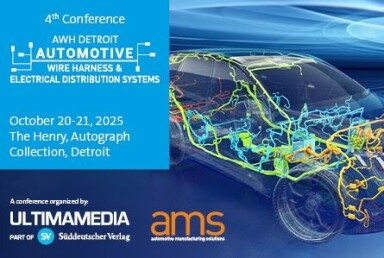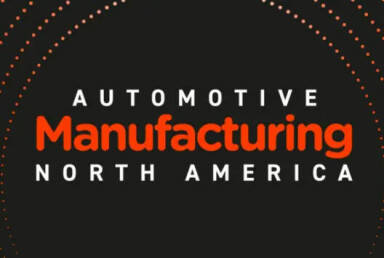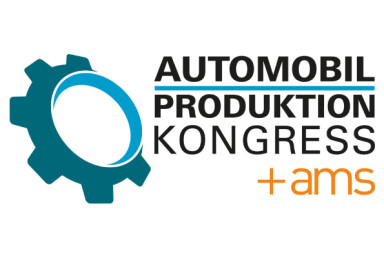Boosting automotive production efficiency with AI-powered predictive maintenance

Discover how Siemens’ predictive maintenance solutions reduce downtime, cut costs, and ensure consistent quality across automotive manufacturing lines using real-time data and AI analytics
The integration of electric vehicles and autonomous technology has introduced additional complexity to production processes, intensifying the pressure on manufacturers to maintain efficiency and reliability. These shifts necessitate smarter operational strategies to manage diverse product lines, maintain quality, and control costs.
One of the most pressing concerns is unplanned downtime, which significantly impacts productivity and profitability. According to Deloitte, poor maintenance strategies can reduce a plant’s productive capacity by 5% to 20%. Traditional maintenance practices, such as reactive or interval-based methods, fail to address these challenges effectively because they rely on predefined schedules rather than real-time equipment conditions. Consequently, these methods often result in unnecessary maintenance or missed early warnings of impending failures.
AI-powered predictive maintenance offers a solution by leveraging continuous data collection and advanced analytics to detect equipment anomalies before they lead to disruptions. The approach enables real-time monitoring of machine health, early identification of irregularities, and timely maintenance actions. This proactive strategy not only minimises unplanned downtime but also supports operational efficiency and sustainability goals.
Research from McKinsey highlights the significant impact of predictive maintenance, estimating it can cut disruptions by up to 50%. By analysing vast amounts of production data and identifying patterns, AI-based solutions enable automotive manufacturers to predict faults accurately and implement targeted interventions before failures occur.
Siemens offers some examples of AI-based solutions in manufacturing from its whitepaper: Keep production on track with AI-powered predictive maintenance for automotive.
Use case 1: Leveraging AI in welding processes
Automotive body shops rely on thousands of clamps for welding operations, but traditional maintenance methods, such as interval-based strategies, present several challenges. These methods often fail to optimise component lifecycles, and diagnosing anomalies in clamp operations can be time-consuming and imprecise, especially when root causes remain unidentified. Maintenance performed without accurately pinpointing issues leads to unnecessary delays and production disruptions, reducing overall efficiency.
To overcome these inefficiencies, Siemens has introduced an AI-powered clamp monitoring system that transforms how anomalies and failures are managed. The solution continuously analyses operational data to differentiate normal from abnormal clamp behaviour, isolating specific failure points such as mechanical issues, faulty cylinders, or valve malfunctions. By leveraging predictive analytics, Siemens says this system can forecast potential failures with up to 80% accuracy and detect 100% of anomalies, triggering timely alerts and maintenance actions before breakdowns occur.
The benefits for manufacturers are significant:
- Increased Overall Equipment Effectiveness (OEE): By proactively maintaining clamps and avoiding unexpected failures, body shops can achieve higher performance levels.
- Reduced operational disruptions: Maintenance becomes strategic and efficient, minimising downtime.
- Cost optimisation: Eliminating unnecessary interventions leads to more streamlined and cost-effective maintenance processes.
Use case 2: Automatic fault prediction in conveyor systems
Conveyor systems form the backbone of automotive production lines, and any disruption – such as the failure of a single electro-mechanical system (EMS) carrier – can halt operations entirely. The main challenges lie in detecting complex fault patterns and managing a lack of visibility across production lines. These limitations create inefficiencies and increase the risk of unexpected downtime, which is costly and disruptive.
To tackle these issues, Siemens developed the Industrial Edge EMS application for condition monitoring and predictive maintenance. The system enables continuous monitoring of critical parameters such as motor current, temperature, and code reader quality, identifying anomalies and weak points before they escalate into failures. Advanced visualisation tools, including dashboards, heatmaps, and automated event logging, provide real-time transparency into system health and performance. Additionally, its carrier tracking feature allows visualisation of the entire conveyor line, making fault detection precise and actionable.
Key benefits include:
- Higher system availability: Early fault detection prevents unplanned stoppages and keeps production flowing.
- Cost savings: Reducing emergency maintenance and avoiding unexpected disruptions significantly lowers costs.
- Process optimisation: Identifying root causes and uncovering hidden bottlenecks enhances efficiency across the production line.
- Faster commissioning: Shorter ramp-up times improve agility and accelerate time-to-market.
Use case 3: Automating power level management and reducing fluctuations
Power supply stability is critical in automotive manufacturing, where even brief fluctuations can damage expensive equipment and cause significant production disruptions. These high-voltage fluctuations often go unnoticed without extensive monitoring, making it difficult to pinpoint root causes or implement preventive measures. This challenge underscores the need for an intelligent, proactive maintenance approach to ensure consistent power quality and operational continuity.
Siemens addresses this issue with an AI-driven predictive maintenance solution that continuously monitors power levels across assets. The system detects irregularities in voltage patterns and issues automatic alerts when deviations occur. It also guides engineers to install additional power monitoring equipment where needed, enabling comprehensive visibility and early identification of problematic components, such as faulty power transformers.
By addressing root causes early, manufacturers can schedule corrective actions – like replacing a defective transformer – during planned maintenance cycles, preventing costly unplanned downtime. This predictive approach also minimises risks to downstream equipment by ensuring stable power delivery.
Key benefits include:
- Significant cost savings: Avoiding equipment damage and reducing the frequency of emergency maintenance interventions.
- Increased power stability: Proactive detection and resolution of power anomalies safeguard entire production lines.
- Improved reliability: Early intervention ensures operational continuity and reduces exposure to unexpected failures.
Use Case 4: Managing robot behaviour at scale to reduce downtime and increase efficiency
Robotic systems are vital for modern automotive production, performing critical functions in assembly lines. However, as robots age, components such as reducer gearboxes become susceptible to wear, often indicated by increased torque levels. If undetected, these changes can lead to severe equipment failures, extended downtime, and costly repairs. Identifying the source of such issues quickly and accurately is essential to maintain productivity.
Siemens introduces an AI-powered predictive maintenance solution that enables large-scale monitoring of robotic equipment behaviour. The system tracks torque trends across multiple axes, detecting anomalies that suggest potential failures. Once an abnormal trend is flagged, maintenance teams receive actionable insights to investigate and resolve issues. For example, if grease leakage is identified on a specific axis, the gearbox can be replaced during scheduled maintenance, preventing catastrophic breakdowns.
This approach shifts maintenance from reactive to proactive, reducing both the financial and operational impacts of unexpected failures. It also enhances the lifespan of robotic assets and ensures more predictable production schedules.
Key benefits include:
- Avoiding major equipment damage: Proactive identification of faults prevents severe failures and costly repairs.
- Reducing downtime: Early detection enables planned interventions, keeping production on track.
- Improved operational efficiency: Reliable robotic systems increase productivity and reduce variability across assembly lines.
AI-driven predictive maintenance: Supporting smarter production for the future
AI-driven predictive maintenance is having a positive effect on automotive manufacturing by addressing critical challenges such as unplanned downtime, inefficiencies, and rising production complexity. Through real-time data monitoring and advanced analytics, manufacturers can proactively detect anomalies, predict failures, and maintain consistent operational performance. This approach not only enhances equipment reliability but also significantly reduces costs and minimises production disruptions.
The benefits extend beyond efficiency. Predictive maintenance supports sustainability initiatives by optimising resource utilisation, reducing waste, and lowering energy consumption – aligning with increasingly stringent environmental regulations. By integrating solutions like Siemens Senseye, manufacturers can scale predictive capabilities across multiple facilities and equipment types, ensuring standardised processes and global consistency.
Furthermore, these technologies empower workforces by automating diagnostics and providing actionable insights, bridging skills gaps and reducing dependency on highly specialised expertise. As vehicle models diversify and production demands intensify, predictive maintenance emerges as a strategic enabler for resilience, agility, and competitive advantage.
Want to read more about AI and predictive maintenance? Download the whitepaper by filling out the form!





